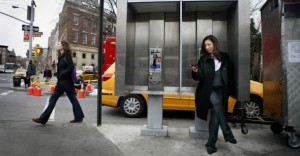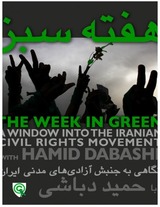Dear reader!
Please check out the on-line news media Tehran Bureau!
Why?
Tehran Bureau is a “virtual” bureau connecting journalists, Iran experts, and readers all over the world. While serious independent journalism remains nearly impossible in Iran — and no Western news organization has operated a bureau there in more than a generation — Tehran Bureau is committed to adding original reporting, comment, and essay on one of the most important stories in the world.
Tehran Bureau is an independent news organization. It is not affiliated with or funded by any government, religious organization, political party, lobby or interest group.
Kelly Golnoush Niknejad, the editor-in-chief, founded Tehran Bureau in November, 2008. In September, 2009, the site entered into an editorial partnership with FRONTLINE, the PBS public affairs series.
You can read more about life on “The Virtual Iran Beat” in Harvard’s Nieman Reports, and on the web site of the Columbia Journalism School.
email address: info@tehranbureau.com
The Week in Green with Hamid Dabashi
by TARA MAHTAFAR in Washington, D.C.
Renowned Columbia University Iran scholar Hamid Dabashi debuted as the host of a new broadcast, “The Week in Green with Hamid Dabashi: A Window into the Iranian Civil Rights Movement,” today. The ten-minute weekly program aims to keep both domestic and diaspora Iranian, as well as international audiences plugged in to news and analysis on the pro-reform Green Movement in Iran.
“Like all other Iranians, I am deeply moved and concerned about the future of democracy in Iran and ways of safeguarding our civil liberties,” Dr. Dabashi told Tehran Bureau. “In the wake of the June 2009 presidential elections, there is a renewed trust in securing these liberties and I very much hope [our program] will have a modest impact on those aspirations.”
Filmed at a makeshift studio at the Ethical Society of New York in northwest Manhattan, The Week in Green [‘Hafte-ye Sabz’] broadcasts in Persian with English and Persian subtitles. A 12-member production team — Iranian and non-Iranian — say they work pro bono in support of the Green cause. The broadcast will be distributed online on the TWIG’s YouTube, Facebook and Twitter pages. It is copyright-free, meaning that it can be hosted and rebroadcast by websites, radio shows, television stations, or other media outlets.
The idea for the program evolved in September when Dabashi saw a void in broadcasts covering the widespread and ongoing opposition movement inside Iran, which he firmly terms a “civil rights movement.” While online publications affiliated with the Green Movement abound in the Iranian cybersphere, radio and television broadcasts with a “professional, consistent format,” he realized, are rare.
“We wanted to create an independent, network-quality broadcast that keeps information channels open,” the program’s producer said.
Noting that the mainstream media has largely dropped coverage of Iran’s internal crisis, he added, “Despite the repressive crackdown by the current government, the Green Movement has proven to be surprisingly resilient. We hope that ‘The Week in Green’ will contribute to the momentum of this inspiring movement, while simultaneously sustaining international focus on the plight and perseverance of its thousands of activists both within Iran and around the world.”
The 10-minute episodes consist of three segments: a recap of the latest news and developments; analysis with interviews and panel discussions; and recommendations to “inspire and sustain” the quest for civil rights. Viewers are invited to post questions for upcoming guests on the program’s social media pages or via email.
The debut edition’s guest, Shirin Neshat, a prominent Iranian video artist based in New York whose film Women Without Men was awarded the Silver Lion for Best Director at this year’s Venice film festival, spoke about the role of art and potent visual symbols in the movement. Future guests are slated to include Hadi Ghaemi, director of the International Campaign for Human Rights, New York Times columnist Roger Cohen, journalist Robert Dreyfuss, author Stephen Kinzer.
Plans for expanding the reach of the program in coming months include an official website, and airing episodes on radio and satellite television.
Asked if he believed his program could have an impact on the course of the movement, Dabashi said, “Yes, I believe we can, by simply providing a venue [in which to have] regular assessment of the most recent developments, plus a sharp and focused discussion of related urgent topics. We particularly hope to put the specific events in larger regional and global contexts, as we reflect on the diverse dimensions of the Green Movement.”
Copyright © 2009 Tehran Bureau




